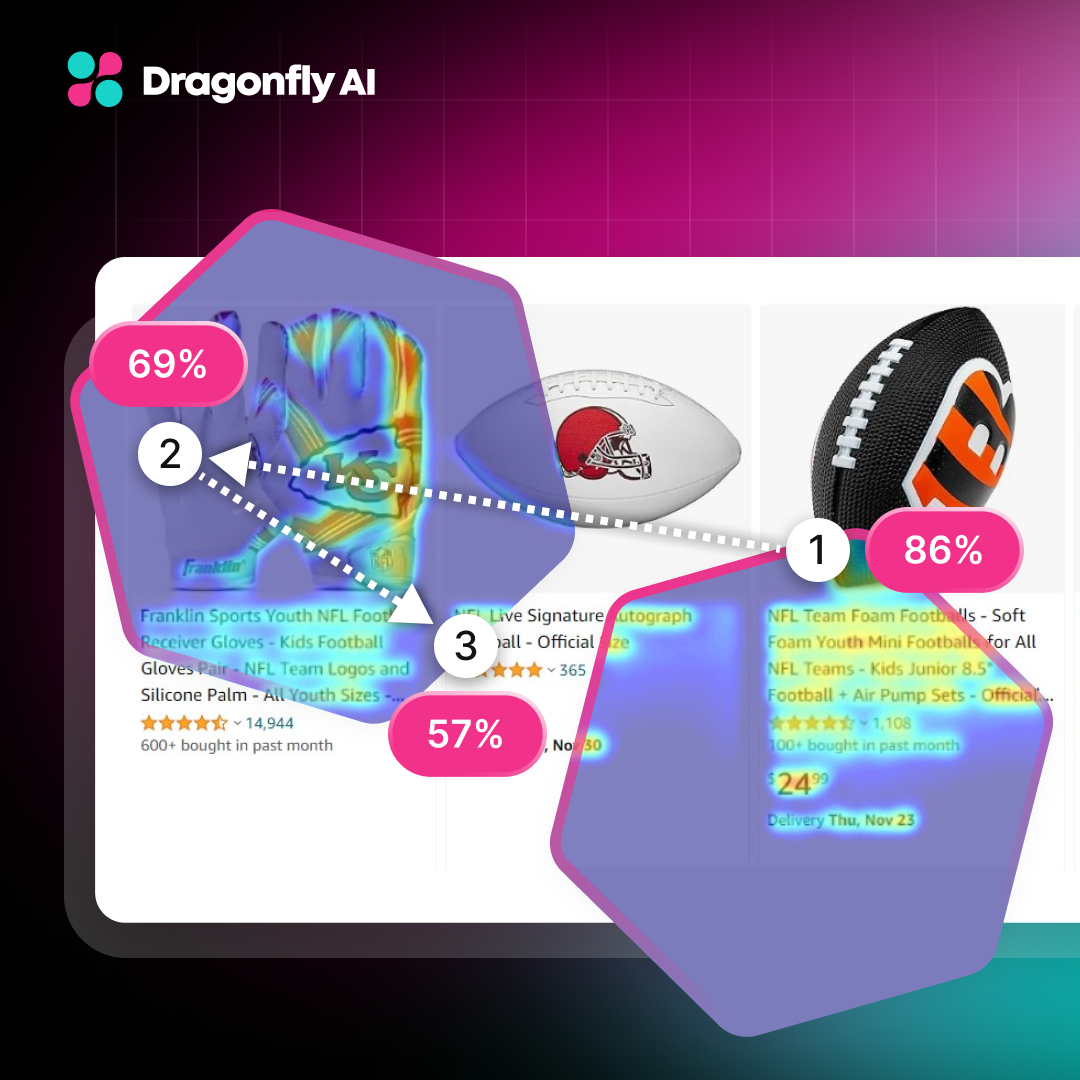How can general merchandise stores stand out and keep attracting customers? With rising consumer expectations and countless shopping options, simply stocking shelves is no longer enough. Research shows that about 64% of shoppers leave stores after seeing disorganized products or poor product displays.
Your shoppers want an enjoyable, efficient experience that encourages them to stay longer and return often. Strategic merchandising principles can help achieve this. Effective merchandising shapes the customer's journey, guides purchases, and inspires engagement across your store.
Let’s discuss how key merchandising techniques can help you maximize retail sales.
What Is Merchandising?
Merchandising is everything you do to promote and sell products to customers. Whether a customer enters your store or visits your website, merchandising helps you guide their shopping experience. How do you make products appealing? Are products arranged in a way that catches their eye?
It covers everything from product placement to displays, promotions, and pricing strategies that inspire buying decisions. Merchandising aims to deliver an exceptional customer experience and maximize sales.
Key Principles of Merchandising
Start with the following core merchandising principles to enhance customer engagement and drive sales:
The Rule of Three
The Rule of Three is a core principle of merchandising. It suggests that grouping products in sets of three creates a more appealing and balanced look. Why three? Studies show that displays with an odd number of visual elements attract people more.
For instance, in a cosmetics setup, try arranging three shades of lipstick—such as nude, pink, and red—side by side. This simple grouping makes it easy for customers to compare shades and explore options.
Likewise, you can apply the Rule of Three across different displays. Arrange three stands with makeup sets or place three skincare samples together. This method draws customer attention and creates a balanced and inviting space.
Eye-Level Is Buy-Level
Customers naturally look at products positioned at eye level first. Placing high-margin or popular products at eye level can boost their visibility. For example, in grocery stores, brands often place best-selling snacks or essentials at eye level to catch the attention of passing customers. This also works in online stores. For instance, placing a high-quality hero image at the top of the landing page with the main product or featured collection helps encourage impulse buys.
Storytelling and Themes
Merchandising becomes powerful when it tells a story that resonates with customers. Guide your customers through a curated experience. Use storytelling to connect products to their lifestyles, needs, and desires. Storytelling helps you make each item feel personally relevant.
Consider a winter display with cozy sweaters, scarves, and gloves set against a snowy backdrop. This setup invites customers to imagine themselves wrapped in warmth, fully outfitted for the season. It taps into consumer psychology and helps shoppers see products as essential parts of their lifestyle.
Color and Lighting
Color and lighting are powerful tools that influence customer behavior. Color psychology shows that warm colors like red and orange can create a sense of urgency, while cooler colors like blue evoke calmness and trust. If you want to guide your customers’ emotions effectively, use these elements strategically.
In physical stores, warm colors are ideal for sale sections. For example, red signage paired with warm spotlights on discounted racks can encourage impulse buys. Similarly, you can combine cooler colors with ambient lighting to promote a relaxed atmosphere. This environment is perfect for showcasing premium or full-priced items.
.png?width=1280&height=700&name=Blog%20image%2010%20(3).png)
Cross-Merchandising
Cross-merchandising is the strategy of grouping complementary products together to boost add-on sales. Unlike the Rule of Three, cross-merchandising focuses on product functionality over visual appeal.
For instance, placing fresh bread near spreads or cheeses prompts customers to pick up both. In fashion retail, displaying shoes and accessories with outfits helps customers visualize a complete look.
E-commerce sites use this tactic with “frequently bought together” features. If a customer views a laptop, the website may also suggest a laptop case or wireless mouse. Cross-merchandising makes it easier for customers to find related products and increases the likelihood of additional purchases.
Simplicity and Space
Clutter overwhelms and confuses shoppers, so keep displays simple and clean. Use white space (on a web page) or empty space around products to draw attention and add sophistication. For instance, in a high-end jewelry store, you can space out displays so each piece stands out.
Similarly, minimalist website and app designs ensure easy navigation in e-commerce. Effective spacing allows you to create a focused experience around featured products and minimize distractions.
Creating Focal Points
Create focal points to guide your customers' attention. In-store, set up standout displays, such as mannequins with new collections or seasonal items near the entrance. Use mid-aisle displays to spotlight limited time offers and featured products. Each focal point should pull customers in and direct them toward key items.
Online, use hero images, banners, and highlighted products to feature at the top of the page. This approach can help you draw attention to new arrivals or bestsellers right away.
Likewise, AI tools like Dragonfly AI can help you optimize focal points further. AI-powered creative optimization tools predict where a shopper’s attention will land next. Insights from Dragonfly enable you to place high-priority products in locations where they garner the greatest attention.
Visual Merchandising Principles
Visual merchandising builds on core merchandising principles by using visuals strategically to attract and engage customers. It’s a powerful tool: over 80% of consumers say product displays influence their buying decisions. Here are specific principles that can elevate your visual merchandising strategy.
Balance and Symmetry
Leveraging balance and symmetry in product displays is one of the most important principles of visual merchandising. Create balance in your displays to make the shopping experience welcoming. Symmetrical arrangements add order and help customers focus on products by reducing visual clutter. In contrast, asymmetry helps certain products stand out by pairing them with other elements. Each approach has a distinct impact on your product display.
.png?width=1280&height=700&name=Blog%20image%2011%20(2).png)
Contrast
Leveraging contrast in product displays helps you make products stand out. Use contrast to guide attention and establish a visual hierarchy. For instance, a bright red dress against a neutral background captures immediate attention.
Similarly, bold product images against a white background in online stores make colors pop and details stand out. You can also use contrasting fonts or backgrounds to highlight promotions.
Consistency in Branding
Consistency reinforces your brand identity and values within your customers. Ensure you use a cohesive color palette and style across all visual elements. For a luxury brand, that might mean using blacks, golds, and whites throughout the store’s design and decor to create a premium feel.
This consistent look should also be carried over online, from websites and social media to emails. When packaging, banners, and descriptions align with the brand’s style, customers recognize and trust the brand across every touchpoint. This familiarity builds a unified experience and enhances brand loyalty.
Directional Signage and Graphics
Effective signage and graphics help guide customers through your store. Clear signs make shopping easier and more enjoyable. In a physical store, directional signs with arrows can point to popular sections like “Men’s Apparel,” “Home Goods,” or “Sale.”
For instance, an electronics store might use bold labels for sections like “Laptops,” “Accessories,” and “Smartphones,” creating a straightforward path for shoppers. Labels like “New Arrivals” or “Clearance” highlight key areas.
Online, use intuitive navigation and clear calls to action (CTAs). A navigation bar with dropdown menus and CTAs like “Shop Now” or “Explore New Arrivals” help guide users directly to featured products.
Seasonal and Trend-Based Displays
Stay relevant by updating displays to match seasons and trends. Seasonal themes bring excitement and encourage purchases. In winter, a clothing store could set up a holiday-themed display with cozy sweaters, scarves, and festive decor to create a warm and inviting atmosphere.
In October, a grocery store might feature a Halloween display with pumpkins and spooky decorations to align its store with the seasonal theme. Similarly, a website can add Halloween-themed banners, bundles, and discounts to inspire holiday purchases.
How AI Enhances Merchandising Strategies
AI technologies, like Dragonfly AI, offer data-driven insights that can optimize merchandising efforts. Here’s how:
Performance Analytics
AI-powered analytics helps you track and improve merchandising strategies in real time. Tools like Dragonfly AI help you measure which displays are driving the most sales and engagement so you can make quick, data-driven adjustments.
For example, if a snack display in a high-traffic grocery aisle isn’t performing as expected, Dragonfly AI’s heatmaps and gaze path tracking allow you to analyze why. You might find that customers are bypassing the display due to low contrast or dim lighting.
Here’s how to optimize:
- Reposition brightly packaged items in high-visibility zones based on heatmap data.
- Add bold signage above the display to direct attention to the snacks.
- Increase lighting around the display, especially in key areas.
Once you’ve made these adjustments, track engagement with Dragonfly AI to assess the effectiveness of your changes. Leveraging real-time A/B testing can help you further tailor the store layout to customer behavior. This targeted, data-driven approach will help you optimize your displays for maximum impact.
Read More: Learn how Dragonfly AI helped Mitsubishi exceed revenue targets by 17%.
Predictive Attention Insights
Predictive AI tools like Dragonfly AI analyze color, positioning, and visual hierarchy to determine which areas of a display or webpage naturally draw the eye. This allows you to position high-value items in spots that maximize visibility. Let’s look at an example to see how it works:
If your new juice display isn’t getting noticed in a busy aisle, Dragonfly AI’s heatmaps and gaze tracking allow you to identify why. You might discover that customers overlook the display due to poor positioning or lack of visual contrast.

Here’s how to optimize:
- Position premium items at eye level: Place the cold-pressed juices in high-visibility zones, such as the center and left-center of the display.
- Use bold, contrasting signage: Catch customer attention by adding vibrant signage in green or orange that contrasts with the juice bottles.
- Create a cohesive display with complementary items: Surround the juices with healthy snacks or similar items positioned slightly lower.
- Add a clear call to action (CTA): Angled signage above the juices, like “Try Our New Premium Juices,” will draw attention and guide customers’ gaze toward the main products.
- Increase lighting for emphasis: Install focused lighting over the juices to highlight freshness and premium quality.
After implementing these adjustments, Dragonfly AI allows you to continuously track engagement and adapt to customer behavior.
Personalization
AI tools like Dragonfly AI create personalized shopping experiences by analyzing individual customer behaviors and preferences. For instance, DragonFly can help you personalize end-cap displays for loyal organic shoppers through AI-driven insights.
Dragonfly AI empowers you to understand customer behavior and strategically position products. Its data-driven personalization features allow you to analyze purchase patterns and customer movement in the store. The data reveals that organic customers often focus on produce but may overlook complementary organic products in other sections.
Based on these insights, you can make targeted adjustments:
- Personalize End-Cap Displays with Digital Signage: When organic-loyal customers enter and scan their loyalty cards, the AI helps modify digital signage near end-caps to encourage additional upsells. For instance, ads featuring pasta sauces can be paired with whole-grain organic pasta.
- Adjust Display Placement Along Shopping Paths: Dragonfly AI’s insights reveal that organic shoppers often start in the produce section. Use this data to place end-cap displays featuring organic granola, yogurt, and juices near the entrance to capture attention early. Position additional end-caps along their path to provide consistent exposure to relevant organic products.
- Refine with Real-Time Optimization: Dragonfly AI’s real-time tracking allows you to monitor engagement with these displays and make quick adjustments. For example, if pairing organic meal kits with produce increases customer interest, replicate this setup in other high-traffic areas.
Space Optimization
AI can help you optimize space by recommending product placements that maximize engagement in both physical and digital stores. For instance, you’re a fashion retailer who wants to encourage customers to upsell high-margin accessories before completing their purchases.
In this scenario, you must optimize the page layout to achieve your goal. Dragonfly AI’s omnichannel testing allows you to analyze customer interactions on the checkout page. Attention heatmaps reveal that customers often miss accessory suggestions placed at the bottom of product pages. However, high engagement occurs near the checkout button.
Based on these insights, you can make targeted adjustments:
- Reposition Accessories: Move high-margin accessory suggestions next to the checkout button.
- Add “Complete the Look” Visuals: Display accessories as “Complete the Look” suggestions directly below the main product, with small images showing how each accessory complements the chosen item.
- Incorporate Dynamic CTAs: Add a CTA, such as “Add to Cart for 10% Off,” that appears when customers hover over accessories.
Implementing these changes can help optimize your web page for higher conversions and sales. Incentivizing high-margin purchases near checkout will help achieve a higher average order value.
Conclusion
Mastering merchandising principles is essential for retailers who aim to elevate the customer experience and increase sales. Combining these strategies with AI-powered insights can help you transform traditional merchandising into a data-driven approach that precisely meets customer needs.
Dragonfly AI’s advanced platform provides real-time creative testing and analytics. It offers powerful tools to optimize merchandising strategies across all channels. Features like AI-powered creative optimization, data-driven personalization, and predictive analytics help you increase product visibility and drive conversions by responding to consumer behavior directly.
Ready to elevate your merchandising strategy? Book a demo and discover how advanced insights can transform your retail experience.


.png?width=1280&height=700&name=Blog%20image%2010%20(3).png)
.png?width=1280&height=700&name=Blog%20image%2011%20(2).png)

